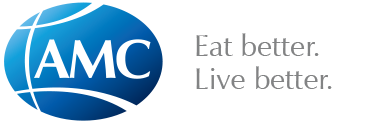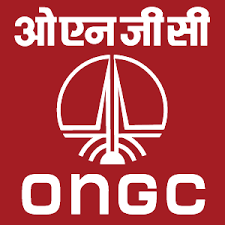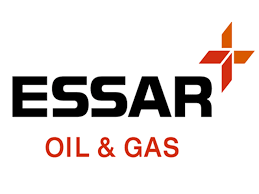FAQs about trademark registration in India
FAQs about Trademark Registration in India
- Why is it important to get a trademark registration in India?
- How to get a Trademark Registration in India?
- How much does it cost to get a Trademark Registration in India?
- What are the absolute and relative grounds of refusal of a trademark registration in India?
- What are the requirements for filing an application for trademark registration in India?
- What are the advantages of obtaining trademark registration in India?
- What kinds of trademarks can be registered in India?
- Can you get an International Trademark Registration?
- What is an International Application under Madrid Protocol?
- What kind of protection does a Trademark Registration in India offer?
- Why should I go for trademark registration of my company name?
- What is ‘Formalities Chk Fail’?
- What is ‘Formalities Chk Pass’?
- What is ‘Marked for Exam’?
- What is ‘Exam Report Issued’ or ‘Accepted’?
- What is ‘Objected’?
- What is ‘Advertised’ or ‘Accepted’?
- What is ‘Opposed’?
- What is ‘Send Back to EDP’?
How to file an application for Trademark Registration in India?
An application for Trademark Registration in India consists of details of the applicant, list of goods and services for which the mark is to be used, and a clear image of the mark.
An affidavit is also needed if an earlier usage of the mark is to be claimed.
A POA from the applicant accompanies the application.
These documents need to be in ENGLISH.
Official fee for Trademark Registration in India
The official filing fee for ONE mark in ONE class is:
| Applicant Type | Indian Rupees | US Dollars |
| Individual/Start-Up Firm | 4500 | 75 |
| Large Firm/Foreign Firm | 9000 | 150 |
Attorney fee for handling a Trademark Registration in India
Action based fee
- Attorney fee for preparing and filing a Trademark application in India
- Additional fee for responding to office actions
- Additional fee for preparing evidences and arguments
- Additional fee for attending hearings with the examiner
Capped Flat fee
- Attorney fee for preparing and filing a Trademark application in India
- No further fee for responding to office actions
- No further fee for preparing evidences and arguments
- No further fee for attending hearings with the examiner
| Click here: Fee for INDIAN applicants in Rupees. |
Why is a trademark registration in India important?
A trademark registration in India protects the owner of the mark by ensuring an exclusive right to use the mark to identify his goods or services, and/or to authorize another entity to use that mark in return for consideration.
The period of protection usually lasts for ten years, but a trademark can be renewed indefinitely beyond the time limit on payment of renewal fees.
Trademark registration in India is a protection capable of being enforced by the Courts, which have the authority to prevent a trademark infringement.
In a larger sense, trademark registration in India promote initiative and enterprise by rewarding the owners of trademarks with recognition and financial profit.
Trademark protection also hinders the efforts of unfair competitors, such as counterfeiters, to use similar distinctive marks to market inferior or assorted products or services.
The trademark registration system enables people with skill and enterprise to produce and market goods and services in the fairest possible conditions, thereby facilitating trade.
Without a registration, the person claiming rights in a trade mark will have to rely on the common law remedy of passing off to defend its rights. The prospects of success in such a claim will depend on the extent to which the person can prove that the mark has acquired a reputation in relation to specific goods/services. In the case of a new business or product, reputation may be minimal and the mark may therefore be difficult to protect.
What are the advantages of obtaining trademark registration in India?
Trademark Registration in India provides:
- Prima-facie evidence of ownership of the trademark.
- An important asset for your business or company and contributes to the goodwill generated.
- Gives you stronger enforceable rights to prevent others from using the trademark in connection with the goods or services for which it is registered.
- Trademarks can be sold, licensed, or assigned.
- Registration usually covers the whole of India.
Trademark rights may be acquired for both registered and unregistered trademarks. A trademark does not need to be registered to benefit from the protection and rights afforded under the Act and the common law.
And more benefits of registration are
Notwithstanding the foregoing, trademark registration provides several additional benefits over and above those attached to unregistered trademarks, including providing:
- Exclusivity to the trademark across all of India rather than to the geographical scope of a trademark’s reputation.
- The basis for filing a trademark in another Convention country.
- The basis for the ground of opposition against a third party in opposition proceedings to prevent a third-party trade-mark application from proceeding to registration.
- The basis for a trade-mark infringement action in India.
- The basis for alerting others of your rights in the context of trademark availability searches, as all trade-mark applications and registrations are entered on the Trademark Registry.
- The basis for determining rights in a licensing regime; and
- The basis for the valuation of trademarks.
Registering a trademark has its own advantages of gaining exclusive legal rights on your trademark and accords better protection of your mark. It is the first step in establishing your own brand.
What re the requirements for filing an application for Trademark Registration in India?
- The name, address, and nationality as well as the type of applicant is to be mentioned. Different fee applies if the applicant is an individual, group of individuals, a partnership firm or a company. For a partnership firm, the names of all the partners are required, and if the applicant is a company, then its home country and the state of incorporation is also to be disclosed.
- A list of goods and/or services for which the mark is to be used.
- The image of the mark in PDF/JPG format.
- If the mark contains or consists of non-English words, a translation of those words into English is required.
- If the application is to claim priority from an earlier filed convention application, details of that earlier application are also required (application number, filing date, country, and goods/services). A certified priority document or its duly notarized copy is to be submitted. If the certificate is not in English, then a certified/notarized English translation is also required. If it is not readily available, the application can be initially filed based on the basic application number, date of the application, and country of the application.
- A copy of the priority document can be submitted within 1 month from the filing date of the application.
- Affidavit mentioning the date of first use of the trademark in India, if an earlier usage is claimed.
- Power of attorney is to be simply signed by a foreign applicant (no legalization or notarization is required). For Indian applicants, power of attorney to be executed on 100 Rupees stamp paper. The power of attorney is not required at the time of filing the application and can be submitted later with no additional cost.
Do note that:
A claim of earlier usage must be filed along with the application, failure to do so would result in the claim deemed to be fresh.
How to get a Trademark Registration in India?
The process of getting your trademark registered begins by filing your application. After applying, the registry will issue us with an official receipt with the filing date and number allotted to the application.
The application is then formally examined by the Indian Trademarks Office, as to its inherent registrability and/or any similarity with existing marks.
If an objection to registration is raised, an official examination report will be issued.
To overcome the objection, it is necessary to file a written response or present evidence of acquired distinctiveness and in most cases, an interview/hearing with the examiner is posted. The Registrar may require the applicant to file a statement of facts testifying to such a user with exhibits showing the mark as used.
On examination, if the trademark application is considered allowable, a Letter of Acceptance (TLA order) will be issued, after which the trademark will be published in the Trademarks Journal.
If there are no oppositions within 4 months from the date of advertisement in the Trademarks Journal, then the trademark registration certificate will be issued.
Trademark Registration is a tedious process, and it takes around 18-24 months to obtain registration in a straightforward case, without any objections or oppositions. However, once the trademark application is filed, an application number is allotted immediately, and the priority starts from the date of application.
Once the trademark is registered, it is valid for a period of 10 years from the date of application. The registration can then be renewed indefinitely if the renewal fees are paid every 10 years.
What kinds of trademarks can be registered in India?
The possibilities are almost limitless. Trademarks may be one or a combination of words, letters, and numerals. They may consist of drawings, symbols, three- dimensional signs such as the shape and packaging of goods, audible signs such as music or vocal sounds, fragrances, or colors used as distinguishing features.
In addition to trademarks identifying the commercial source of goods or services, several other categories of marks exist. Collective marks are owned by an association whose members use them to identify themselves with a level of quality and other requirements set by the association.
Examples of such associations would be those representing accountants, engineers, or architects.
Certification marks are given for compliance with defined standards but are not confined to any membership. They may be granted to anyone who can certify that the products involved meet certain established standards.
The internationally accepted ‘ISO 9000’ quality standards are an example of such widely recognized certifications.
Absolute and relative grounds for refusal of a Trademark registration in India
- The refusal is often under S 9(1) (a) of the Trade Marks Act 1999, if the mark is descriptive or non-distinctive as such that it is not capable of distinguishing the goods and services of one business from others, or is something that indicates kind, quality, quantity, intended purpose, values, geographical origin of the product.
- The refusal is also often under S 11 (1) of the Trade Marks Act, 1999, if the mark is identical with or similar to earlier marks in respect of identical or similar goods and services, and due to this there exists a likelihood of confusion on the part of the public.
Can you get an International Trademark Registration?
Trademark registration is territorial in nature. Separate applications need to be filed in each country where you wish to register your trademark.
If you plan to sell and market internationally, it is essential to register your trademarks in those countries. Usually, the party who first registers a mark owns it. Therefore, it is significant to register your trademarks in each country your company considers to be a potential and key market.
A national trademark registration stops at the border and does not afford rights to the owner of the trademark outside the country in which it is registered.
Most companies expanding into other countries often realize the value of registering their trademarks abroad once it is too late, that is, once they are faced with counterfeiters/imitators or once they are accused of infringing the rights of others. The risks of doing so are extremely high and the consequences may be extremely costly and detrimental to a company’s entire business and export strategy. It can be a severe financial liability to invest in a brand, promote it in the local market, then find that the brand cannot be registered and used internationally and must finally abandon that investment.
- Registering a trademark abroad gives the applicant an exclusive right to commercialize its products in those markets.
- This not only provides a solid foundation to stop counterfeiters but also ensures that the company enjoys exclusive rights over what may be one of its most valuable business assets.
- Registering a trademark internationally also provides an opportunity to license the trademark to others or the basis for a company’s franchising or merchandising strategy.
Thus, the benefits of international registration and protection of one’s trademark clearly outweigh the costs of such registration.
What is an International Application under Madrid Protocol?
The Madrid System for the international registration of trademarks provides one single and cost-effective procedure for the registration of a mark in several countries and territories. India has joined the Madrid Protocol with effect from 8th July 2013.
At present, there are 91 countries which are members of the Madrid protocol as can be seen here:
http://www.wipo.int/export/sites/www/treaties/en/documents/pdf/madrid_marks.pdf
To file an international application under the Madrid protocol, there should be a corresponding trademark application filed in India for the same mark in the same classes.
In a single international application under the Madrid protocol, several member countries may be chosen and designated for the protection of that mark. The filing fees will depend based on the number of classes for the mark as well as the countries designated.
The fees can be calculated using the online tool by choosing Office of origin as India, selecting the number of classes, and specifying whether the mark is in color: http://www.wipo.int/madrid/en/fees/calculator.jsp
In addition to filing fees, a handling fee of Rupees 2,000/- is payable to the Indian Trademark Registry.
Upon applying, the mark is examined by each designated member country where registration is sought and then proceeds to registration.
An international registration under the Madrid Protocol is however dependent on the corresponding Indian application for a period of five years from the date of the international application.
If you wish to obtain registration in a country that is not a member of the Madrid Protocol, a separate national trademark application must be filed directly in the respective country.
Advantages of filing an International Application under the Madrid Protocol are:
- Lower costs and fees payable as compared to individual foreign filings,
- Managing renewals, change in address, change in ownership is easier and more cost-effective
- Additional countries may be designated at a later stage.
What kind of protection does a Trademark Registration in India offer?
Trademark protection means that the trademarked goods/services cannot be commercially made, used, distributed, or sold without the trademark owner’s consent. These trademark rights are usually enforced in a court, which, in most systems, holds the authority to stop trademark infringement.
Conversely, a court can also declare a trademark invalid upon a successful challenge by a third party. A trademark owner has the right to decide who may – or may not – use the trademark.
The trademark owner may permit to, or license, other parties to use the trademark on mutually agreed terms. The owner may also sell the right to someone else, who will then become the new owner of the trademark.
Why should I go for trademark registration of my company name/trade name?
Registrations of Company Names, Business Names, or Domain Names do not provide ownership or a monopoly right in a name as do trademark registrations. To protect the brand name, trademark registration is strongly advised.
The status of my trademark application is ‘Send Back to EDP’. What does it mean?
When there are errors regarding data entry of applications that needs to be rectified, the application is sent to the EDP Section and the status is shown as ‘Send Back to EDP’. This could also happen in cases where the documents are not digitized properly. The status would remain as ‘Send back to EDP’ till these issues are rectified by the EDP Section.
The status of my trademark application is ‘Formalities Chk Fail’. What does it mean?
It is one of the initial stages of the trademark registration process where the status in the Trademark Registry website is shown as Formalities Chk Fail. This could happen in instances such as non-filing of the POA, non-filing of translation/transliteration when the trademark is not in English/Hindi, filing in the wrong class, etc. The reason for the Formalities objection should be ascertained and appropriate action should be taken for the application to move forward for registration.
The status of my trademark application is ‘Formalities Chk Pass’. What does it mean?
It is one of the initial stages of the trademark registration process where the status in the Trademark Registry website shows as Formalities Chk Pass. The Trademark Registry usually checks if the basic requirements are met such as: whether the POA has been uploaded (when filed through an agent) and whether appropriate translation/transliteration has been filed when the trademark is not in English/Hindi. When such basic requirements are not met, the status could be reflected as ‘Formalities Chk Fail’.
The status of my trademark application is ‘Marked for Exam’. What does it mean?
The status shows as ‘Marked for Exam’ when the trademark application has been assigned to an Examiner. The trademark would be examined as to its registrability under the various sections of the Trademarks Act. An examination report is then issued either accepting the trademark for publication or raising objections as to its registrability. At this stage, the applicant needs to wait for the examination report to be issued.
The status of my trademark application is ‘Objected’. What does it mean?
The status is shown to be as ‘Objected’ when the Examiner raises some objections regarding the registrability of the trademark. The examination report citing the objections can be viewed on the Trademark Registry website. To overcome the objections, a written response needs to be filed with the Trademark Registry within one month from the date of receipt of the examination report, failing which the trademark application may be treated as abandoned by the Registry. If the Examiner is not convinced with the written response, a hearing is posted for allowing arguments to be put forth in person.
The status of my trademark application is ‘Exam Report Issued’/’Accepted’. What does it mean?
The status ‘Exam Report Issued’ or ‘Accepted’ is used by the Trademark Registry to indicate that the trademark application has been ordered for publication in the Trademarks Journal before registration. This status is used by the Registry when no objections are raised by the Examiner as to the registrability of the trademark or when the objections are overcome by way of written submissions or hearing. No action is required by the applicant at this point unless the application does not move forward for journal publication.
The status of my trademark application is ‘Advertised before acc’ or ‘Advertised’ or ‘Accepted & Advertised’. What does it mean?
The status is shown to be as ‘Advertised before acc’ or ‘Advertised’ or ‘Accepted & Advertised’ when the trademark application is advertised/published in the Trademarks Journal. This is one of the final stages of the trademark registration process. Once the trademark is published in the Trademarks Journal, 4 months is given for any third party to oppose the registration of the trademark. If no oppositions are filed during the 4-month opposition period, then the trademark registration certificate is usually issued within 3 months thereafter.
The status of my trademark application is ‘Opposed’. What does it mean?
The status is reflected as ‘Opposed’ when a third party has filed an opposition to the registration of your trademark. The notice of opposition is sent by the Registry to the applicant or its agent. To contest the opposition, a counter-statement should be filed within 2 months from the date of receipt of notice of opposition, failing which the trademark application will be abandoned and cannot be revived. No extension of time is granted for filing the counter statement.
A few of our distinguished clients
A few testimonials from our esteemed clients
This article has been written by
Trademark attorney in India
I, Mahesh Bhagnari, am the Managing Principal of the firm:
- I am an Attorney at Law with Bar Council Registration № MAH/1574/2003.
- I am licensed to practice at the Intellectual Property Office as a Patent attorney in India and Design attorney in India with Registration № IN PA 1108.
- I am licensed to practice as a Trademark attorney in India with Registration № 10742.
- I have more than eighteen years of professional experience working in the field of Intellectual property.

You can instruct us by sending an email or calling the phone number mentioned below:
Phone: +91.9860588440
email: info@bhagnari.com
You may make a phone call between 11:00 am and 11:00 pm India time.
Alternatively fill out the contact form and we shall get back to you (make sure to fill in your email ID correctly).
Send all post and documents to the ULHASNAGAR office address provided here.





